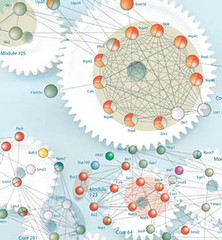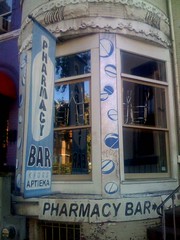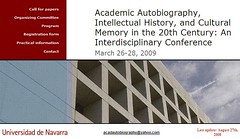In yesterday’s issue of Public Library of Science: Biology (vol. 6, Sept., e240 doi:10.1371/journal.pbio.0060240) bioscientists Shelley Batts, Nicholas Anthis, and Tara Smith have an interesting article titled “Advancing Science through Conversations: Bridging the Gap between Blogs and the Academy”.
The authors notice that scientific institutions have been pretty slow to adopt the blog medium, in spite of the fact that both institutions and bloggers have a common interest in advancing public engagement with science. They suggest that:
By combining the credibility of institutions — trusted gate-keepers for scientific truth — with the immediacy and networking infrastructure of blogs, we believe that these shared goals can be better served with benefits to both partners.
More specifically, they propose “a roadmap” for turning blogs into educational tools for institutions (mainly universities). They present examples of collaborations that can serve as a models for others to emulate, and they offer suggestions for improving upon blog platforms to make them more acceptable to institutional hosts.
In many respects, this is all very commendable. The PloS-article describes and evaluates a number of interesting institutional blog initiatives, like Rudd Sound Bites (www.ruddsoundbites.typepad.com), the ChemTools blog (chemtools.chem.soton.ac.uk/projects/blog, the Berkeley Lab Energy and Environmental Research Blog (bleer.lbl.gov), and the Oxford Internet Institute (www.oii.ox.ac.uk), and so forth. Very useful stuff, which many academics (and not only scientists) could learn a lot from.
One important critical point though. The authors seem oblivious of a crucial aspect of the relationship between individual science bloggers and institutions engaged in science communicating, namely the power dynamics involved. True, they are aware of the fact that the science blogosphere is a bottom-up driven network. But they don’t expand this observation into an analysis of the conflict patterns involved.
For a thorough understanding of how blogs and institutions relate to each other in a science communication network, however, one has to take such potential and actual conflict patterns into account. After all, institutional actors have quite different set of political and economic agendas than singular science actors.
This was in fact one of the themes we discussed in the ‘The Public Engagement of Science and Web 2.0′ session at the 10th Public Communication of Science and Technology conference in June (see paper here).
Generally speaking, I’m afraid the growing literature on science blogging reflects a widespread naïve view of the medium. Like the authors of the PLoS-article, most commentators on blogging as a genre of science communication are pushing for the medium with their critical mindset on standby, even disabled. In other words, there is too much technological optimism, and too little critical analysis involved in the current discourse on science blogging.

 But linguistic and computer analogies are not very helpful when it comes to the proteome with its estimated half million or so specific protein-protein interactions (the ‘
But linguistic and computer analogies are not very helpful when it comes to the proteome with its estimated half million or so specific protein-protein interactions (the ‘ The second image is also a ‘cogwheel model’, in this case of a protein complex in yeast cytoplasm that contributes to mRNA decay (credit: European Molecular Biology Laboratory; from
The second image is also a ‘cogwheel model’, in this case of a protein complex in yeast cytoplasm that contributes to mRNA decay (credit: European Molecular Biology Laboratory; from  Our colleagues in Leeds (i.e., the Division of History and Philosophy of Science, University of Leeds and the Thackray Medical Museum) are re-advertising a studentship for a project on nineteenth-century midwifery instruments. The successful candidate will be part of a group working on 19th-century topics connected with museums and material culture.
Our colleagues in Leeds (i.e., the Division of History and Philosophy of Science, University of Leeds and the Thackray Medical Museum) are re-advertising a studentship for a project on nineteenth-century midwifery instruments. The successful candidate will be part of a group working on 19th-century topics connected with museums and material culture. Eager to train myself for the role of a future biocitizen, I’ve looked in vain for a guide to bars, cafés and restaurants with medical motifs. I mean, if
Eager to train myself for the role of a future biocitizen, I’ve looked in vain for a guide to bars, cafés and restaurants with medical motifs. I mean, if  The aim of the meeting is to engage with current discussions among historians, literary critics, anthropologists, sociologists, etc. about how intellectual history and cultural memory may be developed, articulated, and promoted through autobiography. In other words, the organizers emphasise themes like
The aim of the meeting is to engage with current discussions among historians, literary critics, anthropologists, sociologists, etc. about how intellectual history and cultural memory may be developed, articulated, and promoted through autobiography. In other words, the organizers emphasise themes like